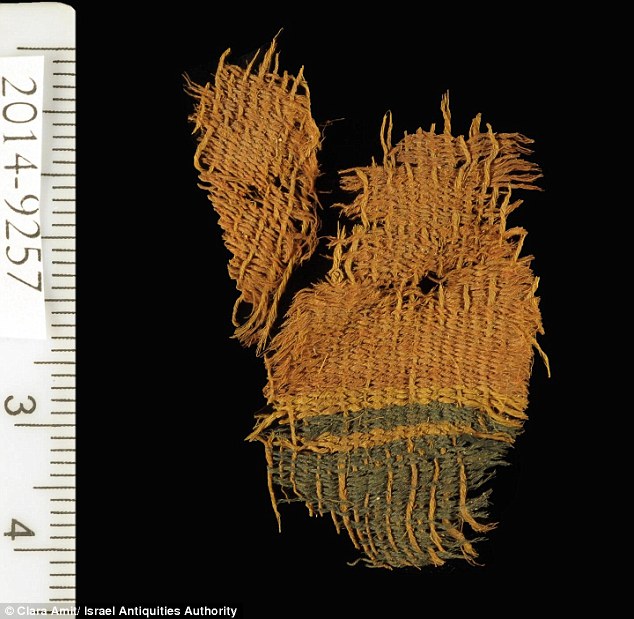Three-thousand-year-old textiles have been uncovered by an excavation team in Arava Valley, Israel. Archaeologists from Tel Aviv University found the textiles preserved within the Timna copper mines – a site that some believe was once linked to King Solomon. Coincidentally the textiles have been dated to the era of the kings David and Solomon.
These fabrics are the first to be discovered from that era and could provide new insight into the fashions of the Holy Land. The team also found seeds, leather, and other rare artifacts.
These findings offer clues about the semi-nomadic Edomites, who were thought to operate the copper mines. According to the Bible, it was the Edomites who warred with the Kingdom of Israel.
The copper from those mines was used to make tools and weapons, and thus copper was the most valuable resource of the time. Slaves or prisoners could have provided the manpower required to mine the copper, but copper smelting required a high degree of skill.
These copper workers would have worked with upwards of thirty or forty variables to create copper blocks. This kind of operation would have required transport of goods across the desert; such goods would have included food, water, and textiles. Fittingly, the researchers have dubbed this site the “Silicon Valley” of copper production.
“The possession of copper was a source of great power, much as oil is today,” said Dr Erez Ben-Yosef, who led the excavation team. “If a person had the exceptional knowledge to ‘create copper’, he was considered well-versed in an extremely sophisticated technology. He would have been considered magical or supernatural, and his social status would have reflected this.”
The fabrics discovered in Arava Valley were actually made in specialized workshops far from Tinma, according to researchers. The seeds that were found number in the thousands and are from the Biblical “Seven Species”. Radiocarbon dating of the seeds – two grain and five fruit species – confirmed the age of the finding.
The pieces of textiles are tiny, with some measuring just under 5 by 5 centimetres, but still show differences in colour, weaving, and ornamentation techniques. These pieces are physical evidence of a complex society. For example, the more elaborate fabrics may have been worn by copper craftsmen, whose social position was highly respected. As mentioned before, this is the first time that researchers have had the opportunity to study textiles from this period.
“No textiles have ever been found at excavation sites like Jerusalem, Megiddo and Hazor, so this provides a unique window into an entire aspect of life from which we’ve never had physical evidence before,” said Dr Ben-Yosef. “We found fragments of textiles that originated from bags, clothing, tents, ropes and cords. We found simply-woven, elaborately-decorated fabrics worn by the upper echelon of their stratified society.”
The linen that was found was clearly not produced locally. Instead, it was most likely from the Jordan Valley or Northern Israel. Moreover, “The majority of the fabrics were made of sheep’s wool, a cloth that is seldom found in this ancient period. This tells us how developed and sophisticated both their textile craft and trade networks must have been,” commented the research team.
Luckily for them, the advancement of technology has made more research options viable. Even a couple of decades ago, such options would have been unthinkable.
“We can reconstruct wine typical of King David’s era, for example, and understand the cultivation and domestication processes that have been preserved in the DNA of the seed.”
With all the new information, the research team has been able to more strongly prove that the Edomites operated within a complex social structure. The findings also revealed new clues on the economy and trade of the time.
According to Dr Ben-Yosef, “This discovery strengthens our understanding of the Edomites as an important geopolitical presence. The fabrics are of a very high quality, with complex designs and beautiful dyes.”
Photo: Clara Amit, courtesy of the Israel Antiquities Authority
